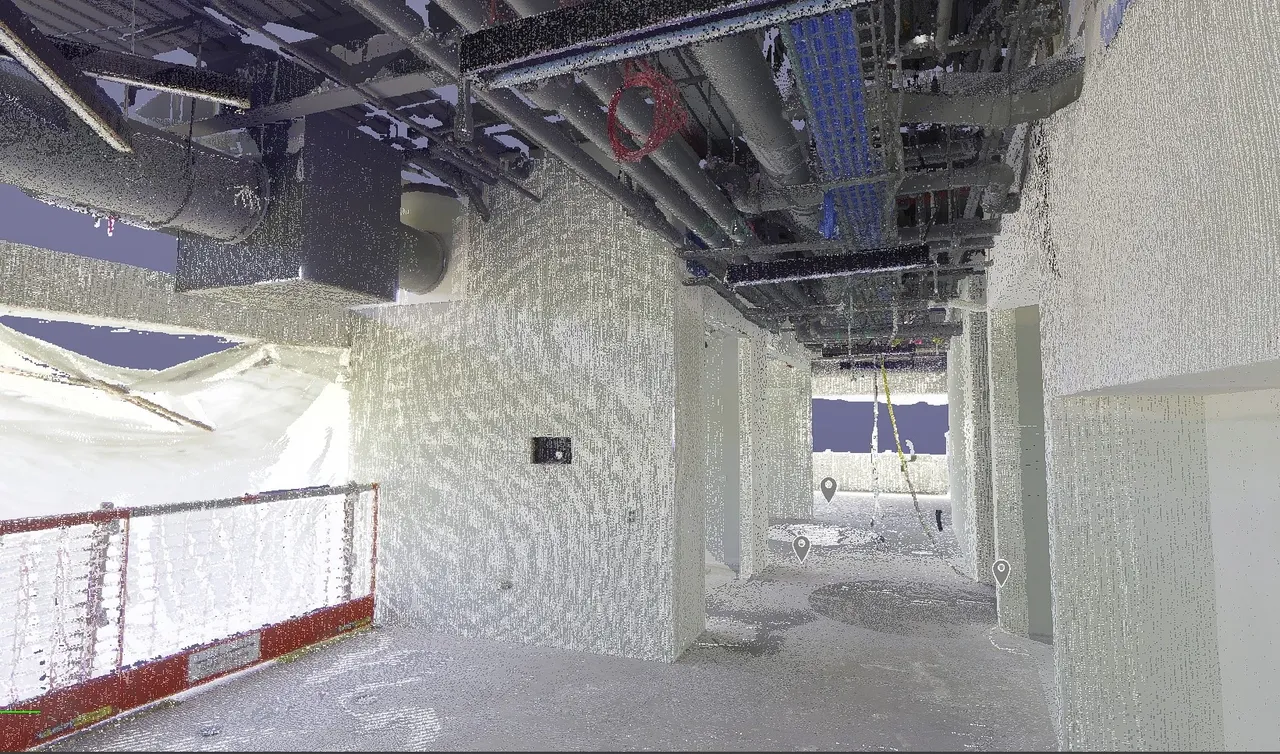How 3D Laser Scanning with LiDAR Enhances Efficiency Through Point Clouds and Digital Twin Creation.
Introduction
The construction industry is no stranger to technological advancements that streamline processes and improve project outcomes. One such groundbreaking innovation is 3D laser scanning using LiDAR (Light Detection and Ranging) technology. This revolutionary approach allows construction professionals to create detailed point clouds and digital twins of construction sites, leading to enhanced efficiency, accuracy, and collaboration. In this blog, we will explore how 3D laser scanning with LiDAR is transforming the construction industry and paving the way for a more productive future.
Precise Data Capture
LiDAR-based 3D laser scanning enables construction teams to capture precise and comprehensive data of the project site. The LiDAR scanner emits laser pulses, which bounce off objects and surfaces, returning to the scanner with valuable distance and geometric information. These data points are then compiled into a dense point cloud, representing an accurate 3D model of the site. By capturing every detail, including existing structures, terrain, and utilities, construction professionals gain a holistic understanding of the site’s conditions.
Enhanced Project Planning and Design
The availability of high-quality and up-to-date point clouds from 3D laser scanning greatly influences the planning and design stages of a construction project. Architects, engineers, and designers can use this data to create detailed digital twins, which are virtual replicas of the physical site. Digital twins allow them to conduct simulations, assess various design options, and identify potential clashes or issues before construction begins. This leads to more informed decision-making, reduced design errors, and optimized project plans.
Accurate As-Built Documentation
In traditional construction, creating accurate as-built documentation can be a time-consuming and error-prone process. 3D laser scanning with LiDAR simplifies this task by providing highly accurate as-built data. By comparing the point cloud data to the original design, construction professionals can easily identify discrepancies and deviations, streamlining the documentation process and ensuring that the final structure aligns with the original intent.
Improved Construction Quality Control
Maintaining quality standards throughout the construction process is crucial to delivering a successful project. LiDAR-based 3D laser scanning aids in quality control by facilitating regular site inspections. Construction teams can use the point cloud data to verify that components are installed correctly, detect potential issues early on, and ensure compliance with design specifications. This proactive approach minimizes rework, reduces costs, and enhances overall construction quality.
Real-Time Progress Monitoring
Monitoring construction progress is vital to keep projects on schedule and within budget. 3D laser scanning with LiDAR enables real-time monitoring through the generation of updated point clouds at various stages of construction. By overlaying point clouds from different time points, project managers can easily identify discrepancies, assess productivity, and make informed decisions to optimize workflows.
Streamlined Collaboration and Communication
The complexity of construction projects often involves multiple stakeholders, including architects, engineers, contractors, and clients. LiDAR-generated point clouds and digital twins offer a common visual language that facilitates effective communication and collaboration among team members. With a shared understanding of the project’s intricacies, stakeholders can work together more efficiently, leading to smoother project execution.
Conclusion
3D laser scanning using LiDAR is reshaping the construction industry by providing a wealth of accurate data through point clouds and digital twin creation. The technology has unlocked a new era of efficiency, accuracy, and collaboration in construction projects. From enhanced project planning and design to streamlined quality control and real-time progress monitoring, the benefits of 3D laser scanning are evident throughout the construction lifecycle. As the technology continues to evolve, we can expect even more transformative applications, further cementing LiDAR’s position as an indispensable tool in the construction industry.
#EmpoweringConstruction #3DLaserScanning #ConstructionInnovation #DigitalTransformation #PrecisionDataCapture #EfficientWorkflows #EnhancedProjectManagement #AccurateMeasurements #VirtualConstruction #ConstructionAdvancements #ModernBuilding #TechDrivenProgress

